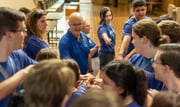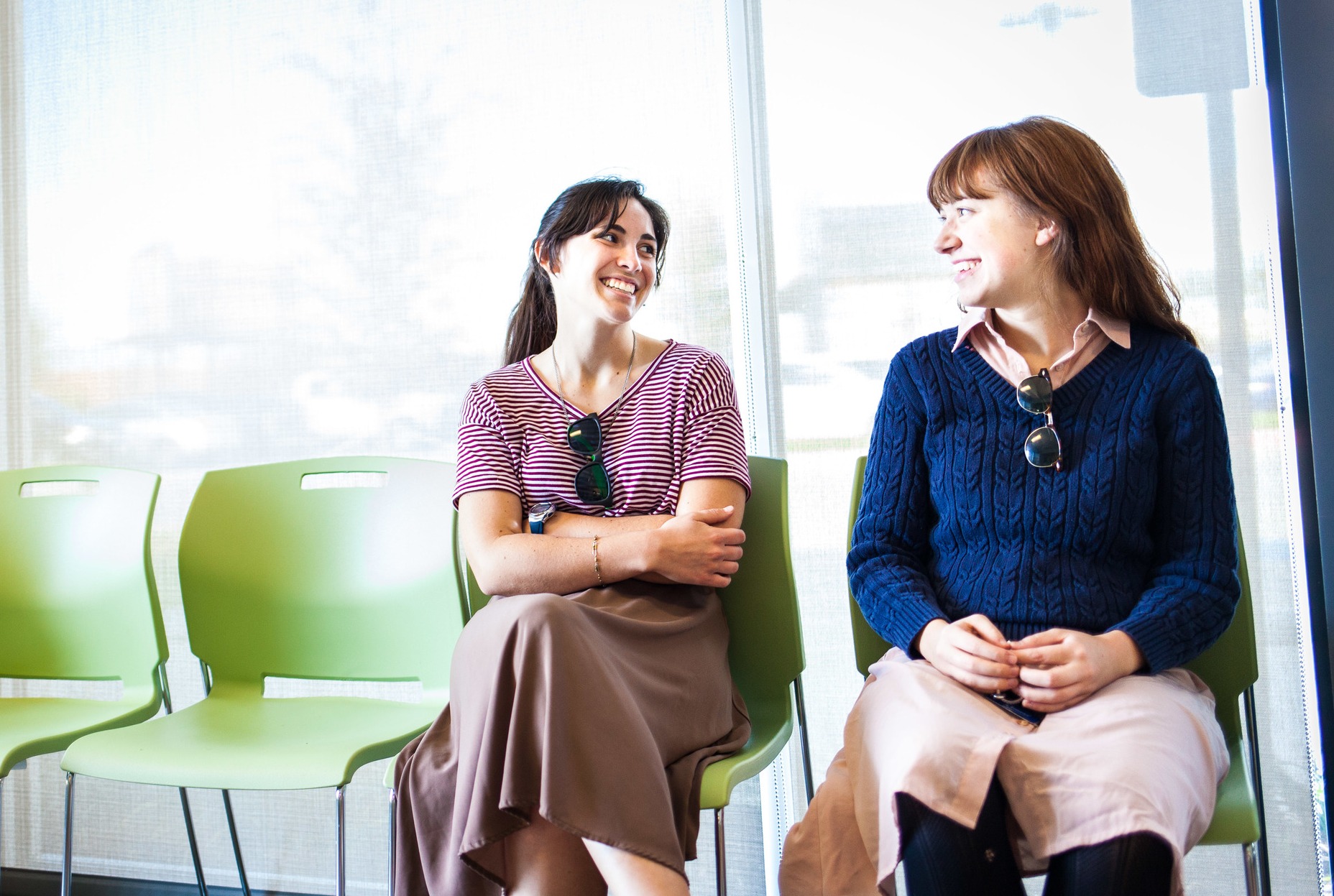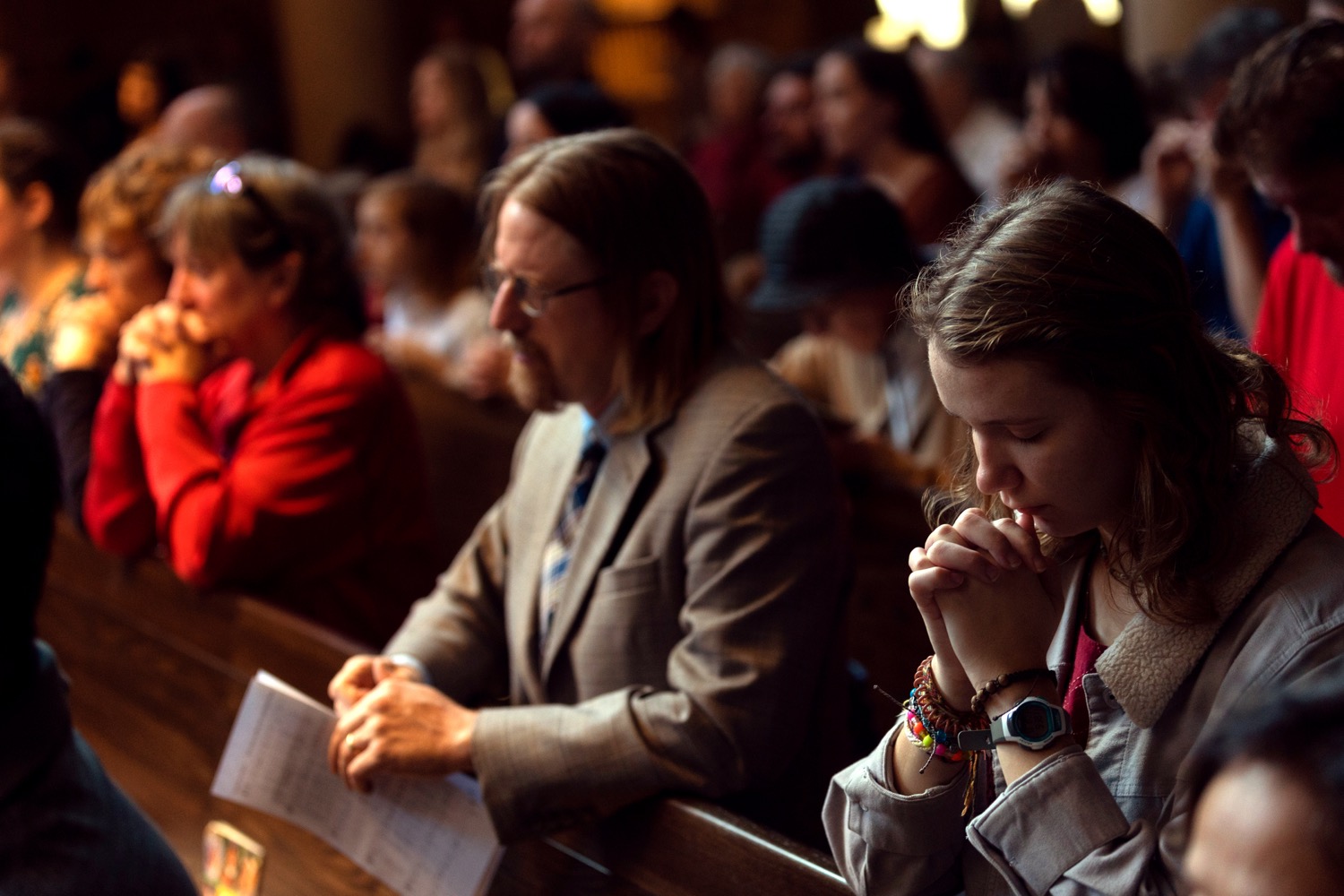Since 1973, the O’Hara Chemical Sciences Institute has trained young scientists with ambition and heart.
Over the summer, Cody Clark ’26 enjoyed ample parking, short Cap Bar lines and a few hours every day in a laboratory in the Haggerty Science Center.
Not long after waving many of his classmates goodbye after finals, Clark began shepherding incoming freshmen through the summer program of the O’Hara Chemical Sciences Institute, one of the longest-running projects of the University of Dallas. Along with an easy, courteous confidence — as he rinses beakers and makes notes, one or two students call him “boss” — Clark has a personal reason for studying biochemistry.
“I’m a type one diabetic, and I had a really bad endocrinologist,” Clark laughed. “So I thought, ‘I’ll be better.’ But also, I really enjoy it. And I want to give back.”
Those motives — ambition, joy and charity — inspire many in the University of Dallas community. As a teaching assistant, Clark welcomed a new generation of thinkers into this community over the summer through the O’Hara summer program, which turns 50 this year. Since 1973, the institute has been blitzing incoming freshmen through a year of general chemistry in eight weeks. Participants live on campus, attending lectures in the morning and labs in the afternoon.
The O’Hara Chemical Sciences Institute began with a gift of $50,000 from Virginia O’Hara, née Virginia Lazenby, daughter of the Waco scientist who invented the Dr Pepper formula and husband of the Dr Pepper Company’s chairman. Reserved for UD’s science programs, the donation continues to support faculty salaries, equipment upkeep and the flagship summer program that gives aspiring scientists a leg up on UD’s demanding four-year schedule.
Alongside honing their chemistry skills, O’Hara students learn the lay of the campus, knock out a Core Curriculum requirement and free up a semester for Rome.
What’s more, like the walk from Catherine to Braniff, finals library sessions that begin in the morning and end at night, or the Core Curriculum itself, the shared effort of the O’Hara summer program has a way of bringing students together.
“It’s a good deal for them,” said Assistant Professor of Chemistry Scott Boegeman, PhD, who directs the institute. “There are a lot of benefits beyond the academic. It gives them a head start on their career. It makes it easier for them to adjust to the faster pace of college life. And, usually, the O’Hara students become fast friends.”
All the participants and teaching assistants lodge in the Madonna dormitory, sharing a small kitchen, a gym, a study room and a pool table. Clark, who participated in O’Hara last year, said the experience of “getting thrown into the deep end” has a way of fostering friendship.
“It’s fun being in that kind of community,” Clark said. “It builds character because you have to work hard.”
They’re really kind people. I think because of the community at UD, that kindness just spreads.
The O’Hara students do have a good time. Boegeman organizes activities for each cohort, including trips to the Perot Museum and baseball games.
But Clark and the others find fun in the work itself. Personalities differ, says lab director Megan Beshirs, MS, but the students tend to share certain traits, including an appetite for challenge.
“It’s kind of crazy when you stop and think how fast we’re zooming through,” Beshirs told me during a laboratory exercise simulating a chemical spill. During typical fall and spring semesters, students have 48 hours to complete a notebook assignment after their lab. O’Hara students, on the other hand, have to turn in their notes by 8 a.m. the next morning.
“I’ve taught at another university, and the students here are much more academically prepared in general than other students,” Beshirs said.
“They’re also just more socially aware, you could say. They’re much more respectful.”
The atmosphere in the lab is focused and jovial. Beshirs allows resourceful students to set up “beaker speakers” — makeshift phone amplifiers, perfect for playing music to titrate by.
Like Beshirs, Chemistry Department Chair Ellen Steinmiller, PhD, notices a certain friendliness unique to UD students.

Most of all, the summer program has enriched countless hospitals, laboratories and institutions with generations of bright young minds prepared by a liberal education to understand as well as treat the human person.
“They’re really kind people,” Steinmiller said. “I think because of the community at UD, that kindness just spreads. It’s so fun getting to know the students. I have former advisees and research students who call me out of the blue and let me know where they are, what they’re doing now, and it’s really nice to have those kinds of relationships.”
On a corkboard above her desk, Steinmiller points to photos of the past several O’Hara cohorts and tells me where UD launched them after graduation. Jisoo Hwang, BS ’23, is beginning a biomedical studies program at Johns Hopkins this fall; Brena (Rossi) Yorimoto, BA ’17, just defended her PhD dissertation at the University of Akron; Mary Hochberg, BA and BS ’23, went to an internship at Micron after graduating this year; Catherine Hand, BS ’21, Gabe Vasquez, BS ’21, Luke Farson, BS ’21, and many, many others are working their way through medical school.
“This is why I’m at UD. I want to get to know my students,” Steinmiller said. “I don’t want to get to know them in a 10-minute conversation every semester during advising; I want to know who they are as people.”
Today, the O’Hara Chemical Sciences Institute serves as proof of what can grow from the initial seed of a gift.
The fund has allowed the Chemistry Department to maintain its own equipment and make UD a home for research. It helps attract sharp applicants and accelerates their progress through UD’s demanding, rewarding undergraduate experience. Most of all, the summer program has enriched countless hospitals, laboratories and institutions with generations of bright young minds prepared by a liberal education to understand as well as treat the human person.



